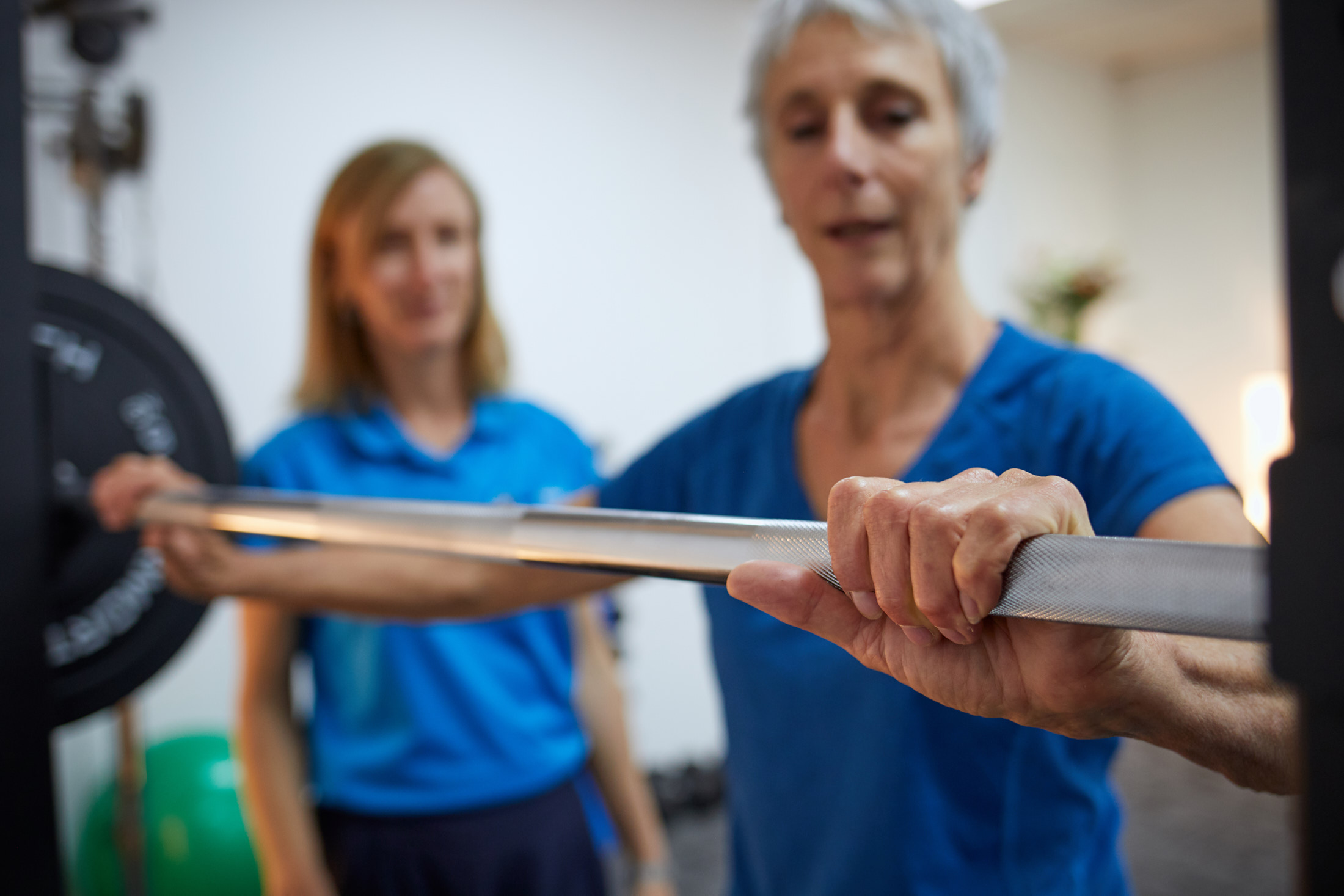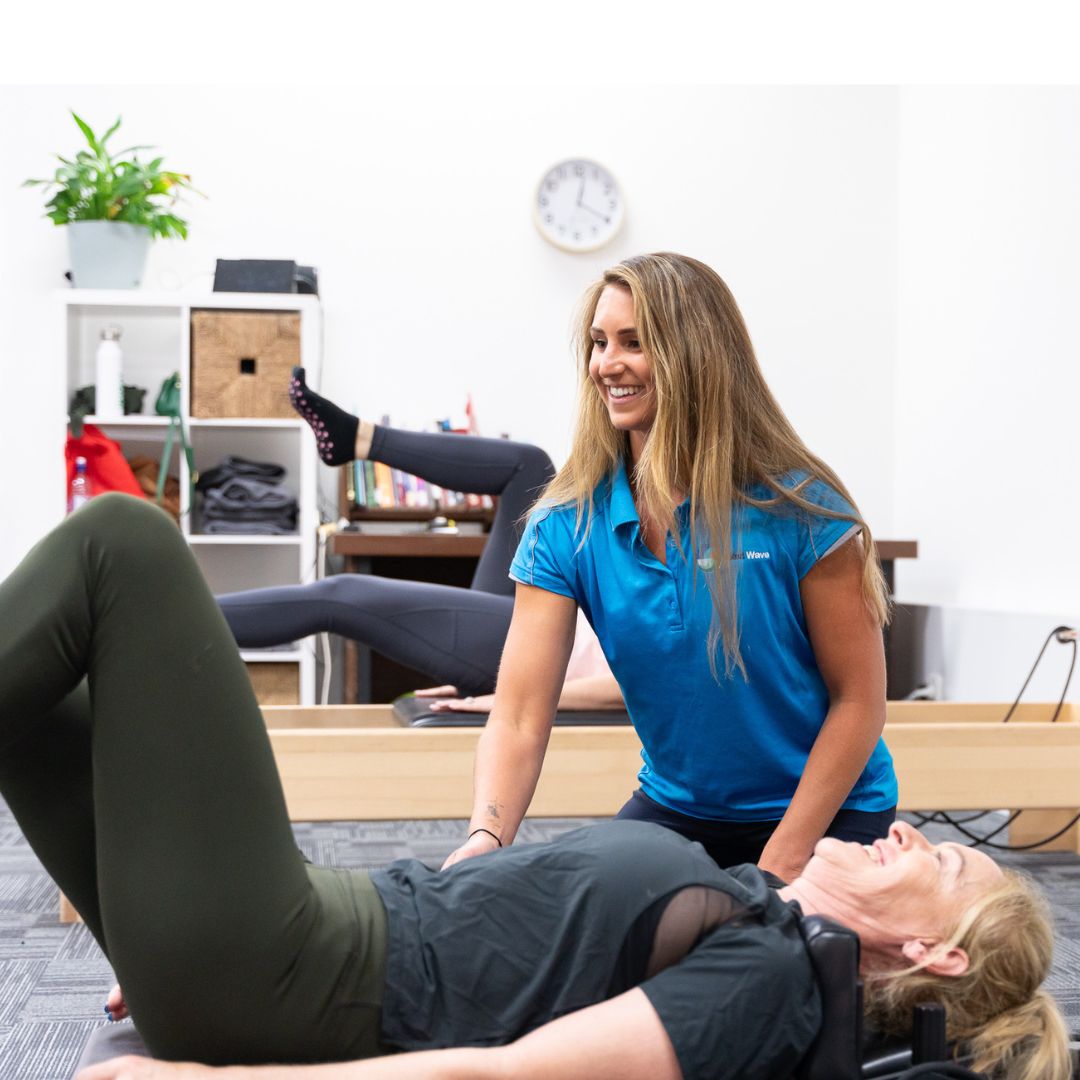GLA:D™ Osteoarthritis Program provides education and exercise under the guidance of a physiotherapist.
GLA:D™ or Good Life with osteoArthritis: Denmark, is the first best treatment for hip or knee osteoarthritis
Experience the benefits the GLA:D™ program with physiotherapist Rushil Shah at Next Wave Therapy O’Connor clinic.
It is helpful for pain management and prehab (prior to surgery) or post-surgical rehabilitation.
The main focus of GlA:D™ is to teach people how to develop the skills to self-manage their hip or knee OA so that you can live your best life.
This program draws on the latest evidence in osteoarthritis (OA) research.
What does the GLA:D™ Osteoarthritis Program involve at Next Wave Therapy?
The program begins with an initial assessment to assess your current functional fitness and ability.
There are two education sessions which are opportunities for the physiotherapist to share the latest research evidence and management strategies, and for you to ask questions and discuss it with the physiotherapist and other participants.
There are 12 group exercise sessions; twice a week for 6 weeks. These are designed to improve muscle control especially around affected joints.
You do not need a referral from your doctor to participate in the program, however you may be eligible for a rebate from Medicare for some of the cost of the program, if deemed appropriate by your GP.
This program enables participants to apply the knowledge and exercises to everyday activities.
What are the benefits of participating in the GLA:D™ Osteoarthritis Program program?
Participants experience:
-
Reduced pain (average pain reduction of 36%)
-
Greater quality of life
-
Reduced use of medication for joint related pain
Other benefits are that people:
-
Learn how to manage their arthritis.
-
Learn exercises that can be used in everyday activities.
-
Improve strength & confidence.
-
Reduced need for surgery or have improved surgery outcomes.
-
Prevent symptom progression.
-
Have increased physical activity
Often joint replacement surgery can be avoided, and in cases where surgery goes ahead, recovery is improved in those who completed the GLA:D program.
This program leads to reduction in symptoms and improved quality of life.
Who is GLA:D™ Osteoarthritis Program suitable for?
The GLA:D™ program is suitable for anyone who experience hip and/or knee osteoarthritis symptoms, regardless of severity.
People who have hip or knee pain from other causes may also benefit from the GLA:D™ education and exercise program. Your physiotherapist will be able to advise about your suitability for the program after an initial assessment.
It is NOT suitable for those who
-
have hip and/or knee pain due to other reasons, including tumor, inflammatory
-
joint disease, result of hip fracture, soft tissue or connective tissue problems
-
have other symptoms that are more pronounced than the osteoarthritis problems e.g. fibromyalgia
Risk factors for Osteoarthritis (OA)
-
OA can happen from 30 years of age but is most common from 50 years and over because cartilage is a living tissue that can age and weaken.
-
Delicate cartilage can run in the family. So, you are more likely to get osteoarthritis if someone in your family had it too.
-
Being overweight puts more load on the joints and increases the risk of osteoarthritis in the knee. The risk of hand and hip osteoarthritis also increases with obesity. This tells us that other things about being overweight can be linked to getting osteoarthritis.
-
Low or no physical activity reduces cartilage regeneration.
-
Muscle weakness reduces joint stability and leads to more loads being applied to areas of cartilage that don’t take weight well.
-
Joint injury from sport, leisure or work greatly increases risk for OA development later in life
Joint injury causing osteoarthritis is common
Sports Related Injury
Half of all people with a severe knee injury (meniscus or cruciate ligament injury), often from sports, get osteoarthritis 10-15 years later.
Most people hurt their knee as a teenager, which means that they can get osteoarthritis in their 30s.
Top level sports can cause great loads on the whole body without allowing for regeneration. This can lead to degeneration of cartilage.
Work or Leisure Time Related Joint Injury
Lots of load over a long period of time without rest can cause osteoarthritis later in life. For example, people who work as laborers (farmers, firefighters, etc.) are more at risk of hip and knee osteoarthritis. Teachers seem to get more hand osteoarthritis.
What is best practice for osteoarthritis treatment in Australia?
Osteoarthritis is the most common lifestyle disease in individuals 65 year of age and older but can also affect individuals as young as 30 years of age.
Current national and international clinical guidelines recommend patient education, exercise and weight loss as the first line of treatment for osteoarthritis.
Next Wave Therapy in O’Connor (Fremantle area) provides treatment programs for osteoarthritis
-
Physiotherapist Rushil Shah runs the GLA:D™ program, providing education, exercise and physiotherapy treatment.
-
Our Naturopath’s can assist with weight management, diet and nutritional advice for pain management . For example, glucosamine, a building block for cartilage, can be found in foods and supplements.
-
Occupational therapy can assist with pain management, participation in daily living activities and aids or equipment if needed
The GLA:D™ program offers a safe, evidence-based first line treatment plan as an alternative to early surgery.
GLA:D™ is also very beneficial for prehab (pre-surgery rehabilitation) and post surgery
How do I join the GLA:D™ program at Next Wave Therapy?
To join our GLA:D™ program in O’Connor (Fremantle area) book an initial assessment with Rushil Shah (Physiotherapist) or attend the first education session (no cost). From there you will join the exercise and education program.
No referral is needed but you may be eligible for a referral from you GP via a Medicare Enhanced Primary Care (EPC) or Chronic Disease Management (CDM) plan.






